Ramses II aka Ramses The Great
Ramses II (aka Ramesses II, Rameses II or Sese) was the third pharaoh of the 19th dynasty. He was one of the most powerful and influential pharaohs of ancient Egypt.
King Ramses the Second took the throne of Egypt in his early twenties (around 1279 BC) and ruled for 66 years until his death (1213 BC). He was the third ruler of the 19th Dynasty and ruled for an amazing 67 years, the second longest reign of the ancient Egyptian pharaohs.
A variety of health problems (such as arthritis and arterial issues) may have contributed to the end of the life of Ramses II, but he had accomplished much in his time.
Ramses II Biography: Architectural Accomplishments
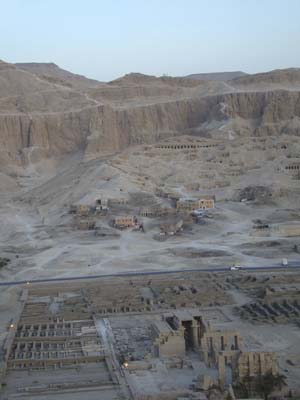
© Richard White - Ramesseum from the air
Perhaps the best-known achievements of Ramses the Great are his architectural endeavors, most notable the Ramesseum and the temples of Abu Simbel. Ramses II's interest in architecture resulted in the erection of more monuments than any of the other ancient Egyptian pharaohs. A significant number of architectural tributes attributed to Ramses II still dominate the landscape of Egypt today.
The Ramesseum is a memorial temple complex situated close to Luxor (even closer to Qurna). Although it is in ruins now, it is still recognizable for the large Pylon of Ramesses inside which is useful as a historical document.
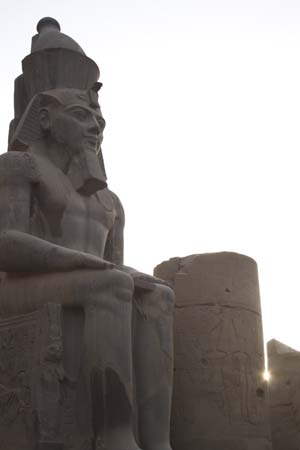
© Santiago Samaniego - Ramses at Luxor
Pylon is the Greek word for the entrance of an Egyptian temple. The pylon is inscribed with images showing Ramesses victories over the Hittites in war, and the subsequent peace treaty which ensued. This pylon, along with other inscriptions and temples created during Ramses II's reign, shows that this pharaoh wanted to be remembered for his influence on military, political, and religious life.
Also at the Ramesseum are the remains of a gigantic Ramses II statue. It used to be 56ft (17m) high, but now only parts of the torso and base remain. Other remains found are those of 2 large statues of a seated Ramesses 2 (the bust is on display in the British Museum).
The Abu Simbel temples, 2 massive twin rock temples, were also built by Ramses II. They are situated in Nubia (South Egypt), close to Lake Nasser, and were meant to commemorate his reign, and that of his queen, Nefertari.
Discover more about Abu Simbel
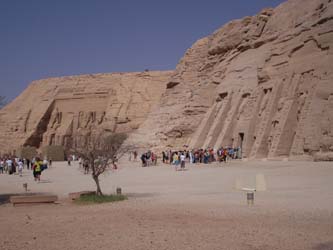
© Neil and Kathy Carey - Abu Simbel
Pi-Ramses, an ancient city in the Nile delta, was established by Ramses 2 and used for his campaigns in Syria. This city is mentioned in the Bible, as a place where Israelites were forced to work for the Pharaoh.
Another ancient city, Abydos (known for its mythological inscriptions) was used by Ramses II to record the history of his reign and that of his ancestors, providing a wealth of knowledge for future generations on the accomplishments of these pharaohs.
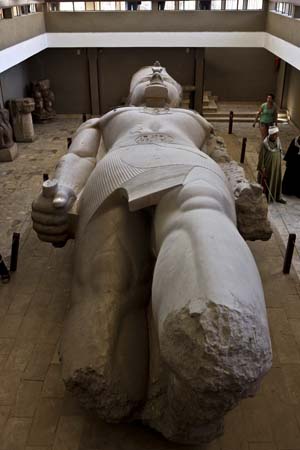
© Cliff Hellis - Ramses II, Memphis
The well known Ramses II statue unearthed at Memphis was thought to have been commissioned by Ramses II himself. It has shown people today how large of an impact Ramses the Great had on the artwork of his day. Other sites have yielded similar large Ramses II statues.
Ramses II: Military Impact
The reign of Ramses 2 was marked by numerous military battles and he became one of the famous Egyptian pharaohs known for his military strength. Much of his reign was occupied with taking back territories that were lost to Egypt during the rule of other ancient Egyptian pharaohs (most notably Akhenaten) was preoccupied with establishing a monotheistic religion. Ramses II's army was 100,000 men strong, enormous for that period in time.
Ramses 2's most famous battle is the Battle of Kadesh, which took place at the city of Kadesh (situated in present day Syria). Fought in 1274 BC against the Hittites, it was the largest chariot battle ever. Ramesses made a tactical error in that fight by dividing his forces, causing one of his divisions to be swept away. Eventually none of the parties gained victory and Ramesses had to retreat because of logistic difficulties.
The military genius of Ramses II helped to secure Egypt's borders from foreign invaders and pirates along the Mediterranean and in Libya. He managed to fend off invasions from the Hittites and Nubians.
In addition, his campaigns restored land to Egypt that had been previously lost to these empires. By forming peace treaties with these empires after warring with them, Ramses II helped to solidify Egypt's borders on all sides, allowing for increased internal stability. Many of these campaigns were completed in the first twenty years of Ramses II's reign.

© kairoinfo4u - Scenes from the battle of Kadesh in Syria
Ramses II's Religious Impact
The religious impact that Ramses 2 had on Egypt is not to be overlooked either. After reigning for thirty years, Ramses II celebrated the Sed festival, in which the king was turned into a God.
Ramses II defaced the monuments of previous reigning dynasties which had fallen out of favor, and sought to return Egyptian religion to how it had been before the reign of Akhenaton.
Since the people of Egypt worshiped Ramses II as a god, it also helped to ensure that his son, who at that point commanded the army, would rise to power following his death, without anyone trying to seize the throne.
Ramses and Moses
A much debated issue of religion and history alike is the Exodus. Known as the departure of the Israelites from Egypt, this event is considered to have happened under the reign of Ramses II. Whether or not it did happen as the story tells us, scientists found evidence for the existence of the notorious ten plagues of Egypt (or at least the first nine of them). The events do show a link to the capital city of Pi-Ramses and the grueling period Egypt crossed under the rule of Ramses II.
Click here to read more about Ramses and the plagues...Ramses II's Mummy
Ramses II was buried in the Valley of Kings, but had to be replaced because of looting. After a detour, his mummy was moved to tomb DB320, located near Deir el-Bahri, where it would be safe from tomb robbers. In 1881 his body was discovered there and moved to Cairo's Egyptian Museum.
The mummy learns us Ramses II was rather short for an ancient Egyptian: 5ft7 (170cm). It also shows us his hooked nose and wounds and fractures incurred in battle.
In 1974 the mummy was transported to Paris because it needed treatment for a fungal infection.
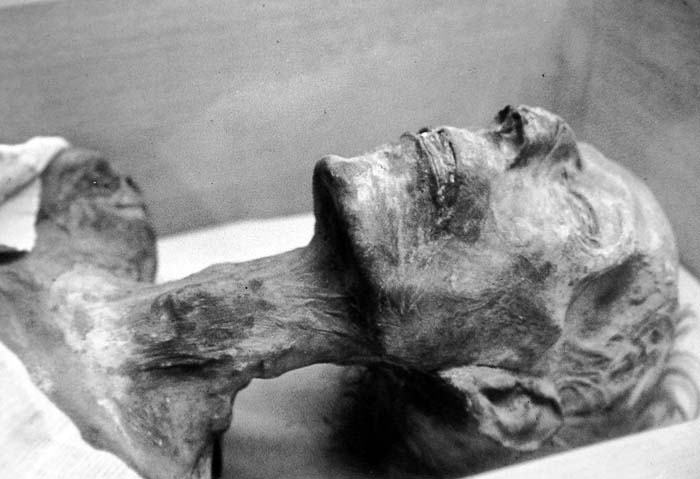
© Jimmy Smith - Mummy of Ramses II
Ramses II Facts
- Ramses II has been identified with at least two figures in the Bible, including Shishaq and the pharaoh of Exodus. Some suggest Ramses II is the pharaoh that ruled during the time of the Biblical Exodus story. The story is about the Israelites that are forced to work for the Pharaoh. The Hebrew god Yahweh helps them by imposing the Ten Plagues upon ancient Egypt, after which the Israelites manage to escape the Egyptian army at the Crossing of the Red Sea. However, these claims are controversial at best.
- Ramses II had such a great legacy that at least nine later pharaohs were named after him.
- Although Ramses II helped to consolidate Egyptian power, later pharaohs did not govern as well, and the Egyptian empire fell a century and a half after his death.
- Analyses of the remains of Ramses the Great has revealed that he probably had red hair. Red-haired people in ancient Egypt were seen as followers of the God Seth.
- At the end of his live Ramses II had serious health problems. He had dental problems resulting from an abscessed tooth and walked with a hunched back due to arthritis.
- Ramses II outlived most of his family; his eventual successor was actually his thirteenth son, Merenptah (aka Merneptah). The 19th Dynasty ended with his rule.
- While it was quite common for ancient Egyptian pharaohs to have several wives, Ramses II seems to have exceeded the norm in number of wives and children. At the end of his long life, the pharaoh had sired over 100 children.

